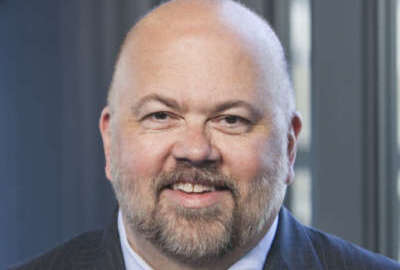Uncle Sam wants to get younger. Again.
Less than 7% of the federal workforce is under the age of 30, but data shows the government has long struggled to attract young talent. Will this time be any...
As a graduating college senior, my dad tried to offer me some advice. There weren’t many full-time jobs in the journalism field where I had just earned a degree.
“You might want to look at USAJobs.gov. You know there are some public affairs jobs with decent salaries,” he would say. “The benefits are stable.”
My dad, as I’ve mentioned before here, is a retired fed. He spent his entire career in government, first a couple years in military service and then a couple decades at one agency.
I never seriously considered a public affairs job in government. But eventually, I started covering it.
I fell firmly in the “under 30” category when I first took on the federal workforce beat, and I often heard the same general statistics. Less than 10% of feds were under the age of 30, and it sure seemed like a lot of people were retirement-eligible, stoking fears of a long-awaited “retirement tsunami.”
But even after I’ve aged out of the target 20-29 category, the statistics haven’t really changed. They’ve moved up and down slightly over the last decade. Data shows the Obama administration had some success attracting new feds from the 20-29 age cohort in 2009 and 2010; perhaps 20-somethings were lured in by the promise of “making government cool again.”
But then the government shut down and sequestration kicked in. Maybe government wasn’t so cool after all?
But look back even further even farther, and data shows the problem was even worse. Just 4.7% of federal employees were between the ages of 20 and 29 in September 2000, according to public data from the Office of Personnel Management.
Things slowly improved as the size of the government grew slightly during the George W. Bush administration.
(Data source: Office of Personnel Management FedScope database. Data are for full-time, non-seasonal, permanent, civilian federal employees in the executive branch)
And between September 2008 and 2012, the percentage of feds between the ages of 20 and 29 hovered at around 8-9%, a high point over the last two decades.
Somewhere along the way, the government adopted new rules for its internship program. Data shows the government as a whole is offering far fewer paid internships under the Pathways Program today than it was a decade ago. Agencies offered 60,000 paid internships in 2010, compared to just 4,000 in 2020.
Naturally, the federal government is hiring fewer interns into full-time positions. Agencies hired 35,000 interns back in 2010, compared with just 4,000 in 2018, an 89% drop. Recruiting young talent gets more difficult when potential candidates have little sense of what government does.
Today just less than 7% of the federal workforce is under the age of 30, compared to 19.7% in the private sector. Nearly one-third of employees are eligible to retire in the next five years, according to Partnership for Public Service analysis of OPM data.
So what’s next?
“Early career talent” is a big focus for the current administration. It’s not that any of the other administrations avoided the problem, but we’re hearing more about it right now.
OPM earlier this year finalized two hiring policies that are supposed to help agencies hire student interns and recent graduates more easily. It’s working on improvements to Pathways, the government’s main internship program that has gotten some lackluster reviews in recent years.
Reducing the untold number of unpaid internships in government is another priority for the administration. Last week, the Partnership announced a new program that it launched with Schmidt Futures, the philanthropy initiative from former Google CEO Eric Schmidt.
The program will pay for 400 students to take on paid internships at two agencies in summer 2022 and 2023. They’ll get a stipend, and the Partnership will provide the orientation and the professional development training.
Two agencies and 400 students is a start, but it’s probably not enough. Not all interns will turn into successful working feds a few years later. Some won’t like the job or the bureaucracy. Others will find opportunities in the private sector or the non-profit space. The list of reasons goes on.
So will agencies actually get anywhere? Again, the data shows this is a perennial problem. There have been ups and downs over the years, often tied to periods of strong federal hiring.
Theoretically, agencies are in one of those moments now. Agencies are supposed to be hiring, in part to fill the usual vacancies that come up through retirements and attrition. But the new Infrastructure Investment and Jobs Act is putting more pressure on agencies to hire, and fast.
This time next year, will the federal workforce be any younger? The labor market is tough out there, and in case you haven’t heard, the federal hiring process is long.
But in today’s world, maybe the promise of “stability” will stick with the young students entering the job market. Agencies will certainly try to make the pitch.
Nearly Useless Factoid
By Jonathan Tercasio
Christmas trees are grown in all 50 states, including Alaska and Hawaii.
Source: History.com
Copyright © 2025 Federal News Network. All rights reserved. This website is not intended for users located within the European Economic Area.
Nicole Ogrysko is a reporter for Federal News Network focusing on the federal workforce and federal pay and benefits.
Follow @nogryskoWFED




